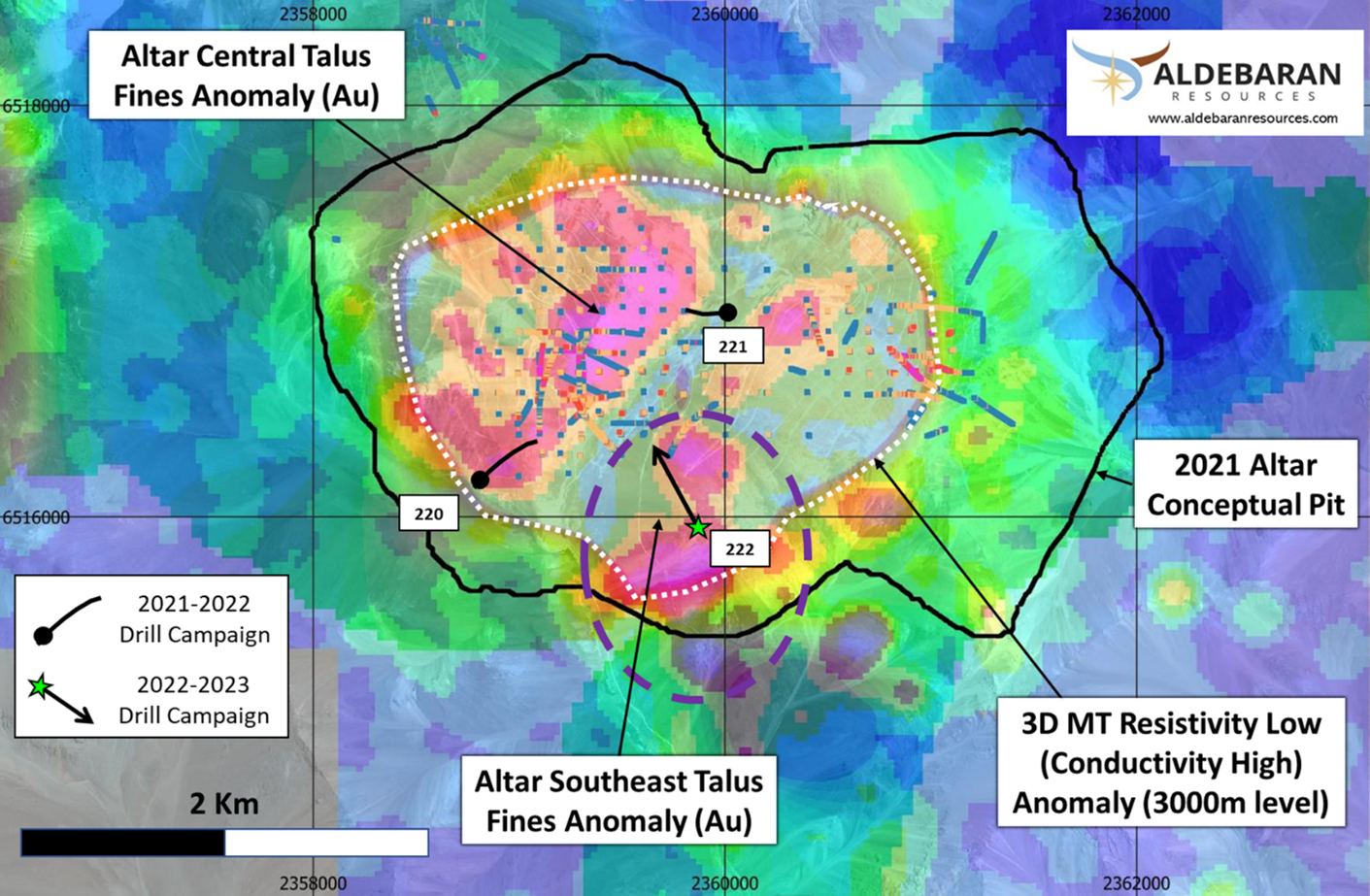Aldebaran Resources Inc. has stated that drilling has begun at the Altar copper-gold project for the field season of 2022–2023. Aldebaran presently has one drill rig on the property, but by the beginning of December 2022, they expect to have three rigs operating.

Plan map. Image Credit: Aldebaran Resources Inc.
Towards the end of the 2021/2022 field season we received very encouraging geophysical data, indicating that the Altar East and Altar Central deposits may be substantially larger than previously thought. Our first hole into the northern edge of the geophysical anomaly, hole 221, provided a proof of concept, returning over 1 km of mineralization.
John E. Black, Chief Executive Officer, Aldebaran Resources Inc.
Black added, “The entire hole is outside of the current resource estimate for the property, which already shows that Altar is one of the largest undeveloped copper-gold projects in the world. The goals of the 2022/2023 drill program are to further test this promising anomaly and test undrilled areas currently defined as waste in the 2021 resource estimate.”
“When we feel that we have properly tested the geophysical anomaly, we will transition to a resource update for the entire Altar project, including the Radio Porphyry deposit, which was the focus of drilling in the 2021/2022 field program,” he further added.
The results of the 3D IP/Resistivity and MT geophysical surveys carried out throughout the Altar copper-gold project showed a convincing coincidence between areas of high conductivity (i.e., low-resistivity) from both the IP and MT data, and areas of recognized copper-gold mineralization characterized by the previous drilling.
Only a small section of this massive anomaly, which measures 3 km × 3 km × 2 km and is located between, to the south of, and below the main Altar Central and East deposits, had been drill-tested at the time.
The management’s long-held conviction that the Altar system is significantly larger than previously believed was then supported by drill holes ALD-22-220 and ALD-22-221. Multiple drill holes will test the substantial geophysical anomaly during the 2022–2023 campaign from more beneficial locations.
ALD-22-222, which was stopped at 7 meter depth in June 2022 due to a snowfall that ended the campaign, will be continued as the first drill hole of the 2022–2023 campaign. A strong, multi-element talus fines geochemical anomaly at the surface coincides with a favorable geophysical signature in the area that is the target of that hole’s testing.
The large geophysical anomaly will include additional high-priority drill hole testing areas that have more favorable geological and alteration indicators based on earlier drill holes.
Wherever feasible, holes are also being designed to test regions that were labeled as “undefined waste” due to no drilling within the current 2021 conceptual resource pit shell. There are favorable geophysical and/or geochemical anomalies in or close to several of these “undefined waste” areas, which present an opportunity to turn waste into mineralization.